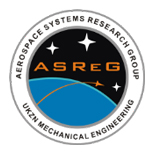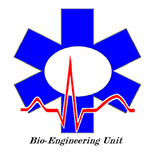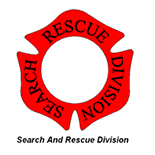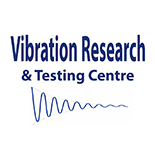Aerospace Systems Research Group (ASReG)
Overview: The Aerospace Systems Research Group (ASReG) is located within the University of KwaZulu-Natal’s Discipline of Mechanical Engineering. ASReG was formed in 2009 by Jean Pitot and Michael Brooks. We are a small but focused group with graduate students currently enrolled in the Masters and Doctoral research programmes. We conduct applied research in rocket propulsion and associated technologies such as thermal management and launch systems.
Mission: To develop aerospace technologies related to rockets, space vehicles, and human skills in aerospace engineering.
| 
|
| |
Composite Structures and Nano Mechanics
|
| |
The Energy and Materials Engineering Research Group (EMERG)
|
| |
Green Energy Solutions (GES) Research Group
|
| |
Group for Solar Energy Thermodynamics (GSET)
Overview: The world relies heavily on fossil fuels and nuclear power to generate its electricity. The outcome is an extensive system that threatens the health of the population, leads to the destruction of the environment, destabilizes the earth’s climate, and deprives future generations of clean air, clean water and energy independence. The use of renewable energy resources such as solar, wind, geothermal and biomass have the potential to produce a significant percentage of the world’s energy needs whilst alleviating the negative effects of using fossil fuels and providing other important benefits.
Mission: The Renewable Energy Research Group focuses on technologies for efficient energy conversion and utilization. We aim to accelerate the knowledge of renewable technologies to meet the challenge of a safe, sustainable energy supply. | 
|
| |
Mechatronics and robotics Research Group (MR2G)
Overview: MR2G is a research group based in the School of Mechanical Engineering on the Howard Campus UKZN. The group has a dedicated laboratory on the premises including access to the mechanical engineering workshop. Further facilities include 3D printers, CNC lathes, Serial Robots, Parallel Kinematic Robots, Festo Miniature Manufacturing Plant and a driving simulator.
Mission: To establish a 'State of the Art' research and education environment for the development of Mechatronics and Robotics Technologies. To educate students in the field of Computer Integrated Manufacturing. To collaborate with local and international academic institutions while incorporating South African industry partnerships. | 
|
| |
| Stopforth Mechatronics, Robotics and Research Lab
Overview: The Stopforth Mechatronics, Robotics and Research Lab, is a multi-disciplinary research environment, allowing for world class, and world first research activities to happen. International and national collaboration has been critical in the development of research that can be applied, to solve and understand world problems. The Search and Rescue Division, and the Bio-Engineering Unit is housed within the lab.
Mission: To research, design and develop solutions for applications and world problems, with the collaboration of international and national academic, industry and commercial organizations and companies. |
| Bio-Engineering Unit
Overview: The Bio-Engineering Unit applies its engineering capabilities for biomedical research and technology development. By integrating expertise in electronics, artificial intelligence, micromachining and material technologies with biological and medical sciences, the Bio-Engineering Unit is uniquely positioned to conduct multi-disciplinary biomedical research. The different requirements that are needed for these devices are investigated which involve video transmission, communication and control for each device’s unique capabilities. The types of devices that are being researched are medical practitioner’s aiding devices; disabled people’s support devices and bio-mechatronics devices.
Mission: Research is being done on the design and development of robots and devices that will assist people and surgeons
| 
|
| Search and Rescue Division
Overview: The Search and Rescue Division perform research, design and development of unmanned vehicles to assist in emergency and disaster situations. Search and rescue robots assist with the location of victims and determining of dangerous environments, which aids the rescuers entering the site. Many of these vehicles are appropriate for inspection robots.
Research is being conducted on the design and development of land, water and aerial unmanned vehicles. These researched vehicles will be used for scenarios of building, mines, sea, air and landslides rescues, searches and investigations. Further development will allow for Artificial Intelligence (AI) to optimize the results of the above mentioned scenarios. AI allows for the detection of danger and victims with the use of communication, gas, and image analysis of the unstable environments.
Mission: Research is being done on the design and development of robots and devices that will save lives, and assist people in dangerous environments. | 
|
| |
Vibration Research & Testing Centre (VRTC)
Overview: The VRTC provides the basis for the performance of high-level applied research that addresses the key issues relating to the operation of overhead transmission & distribution lines (conductors, clamps and other equipment). It is an ideal facility to carry out strategic research on mathematical & experimental modeling of overhead transmission & distribution lines relating to wind induced Aeolian vibrations.
Mission: The overall vision of this portfolio is that the investigations into the vibration damper testing on the overhead transmission lines, will contribute to the improved distribution of electricity, in terms of optimized costs in structure life span, reliability and safety.
Website: vrtc.ukzn.ac.za
| 
|